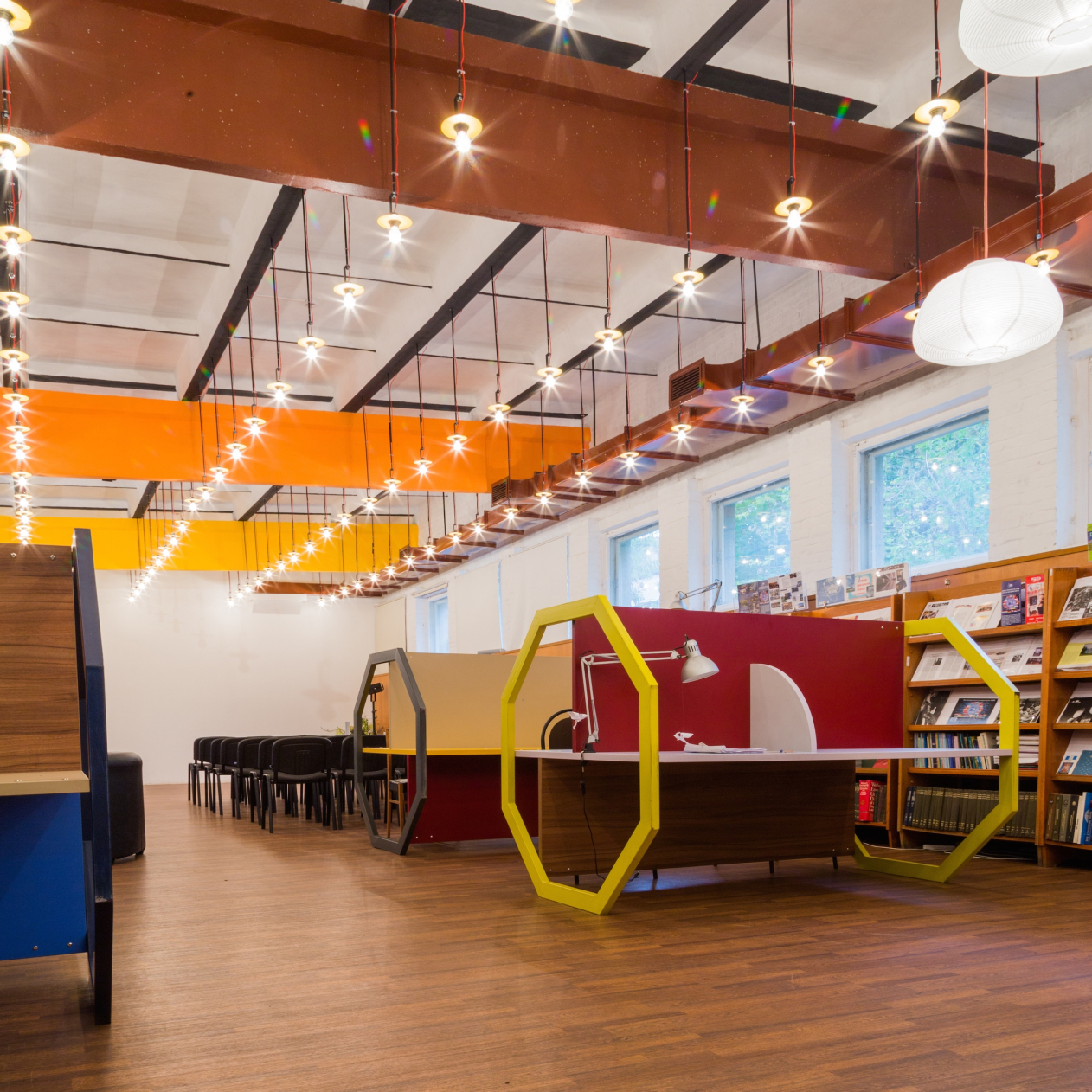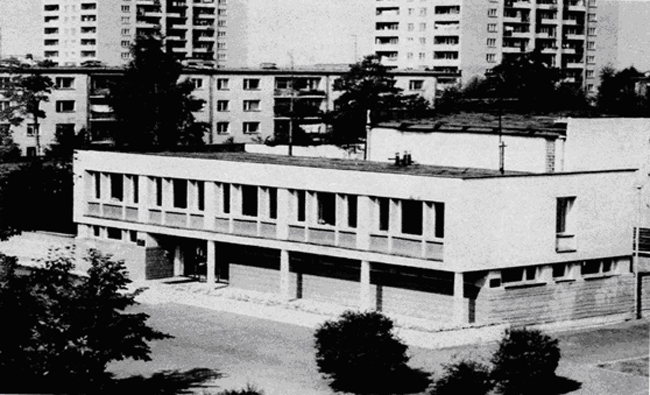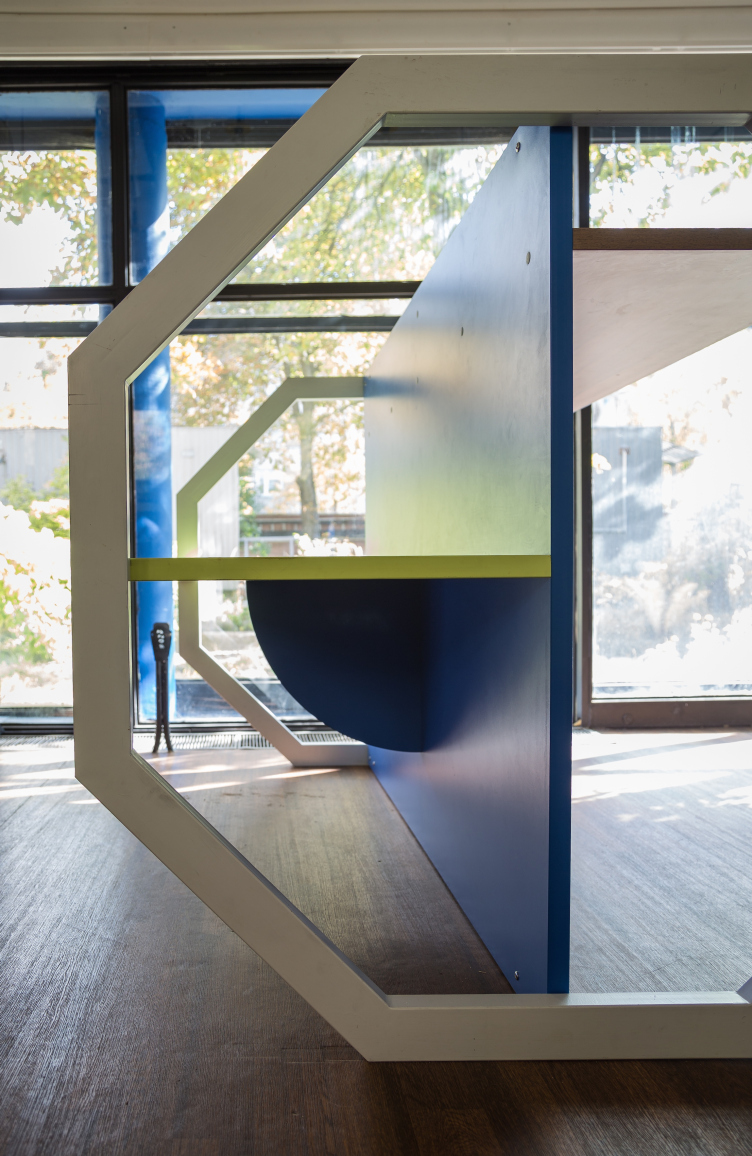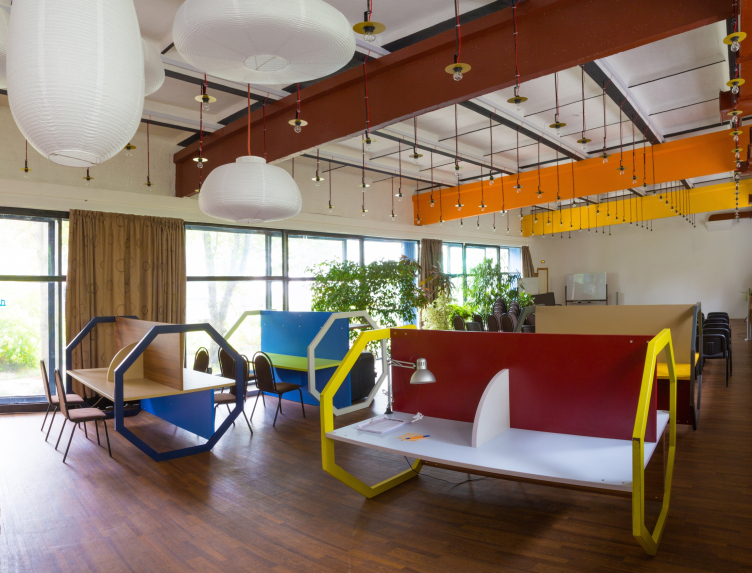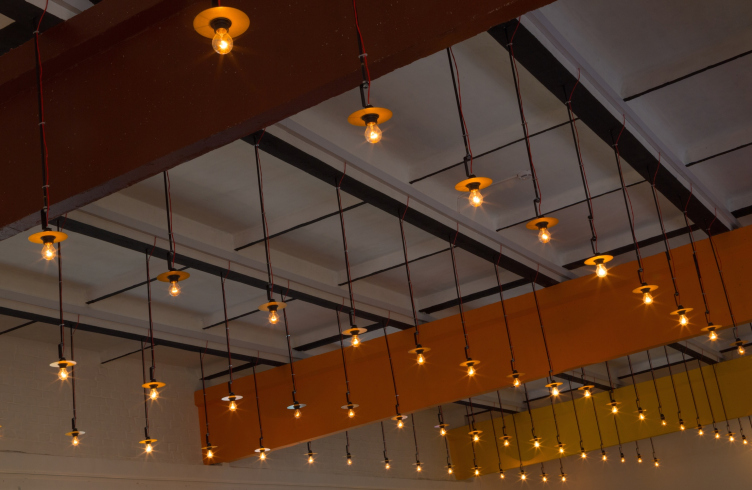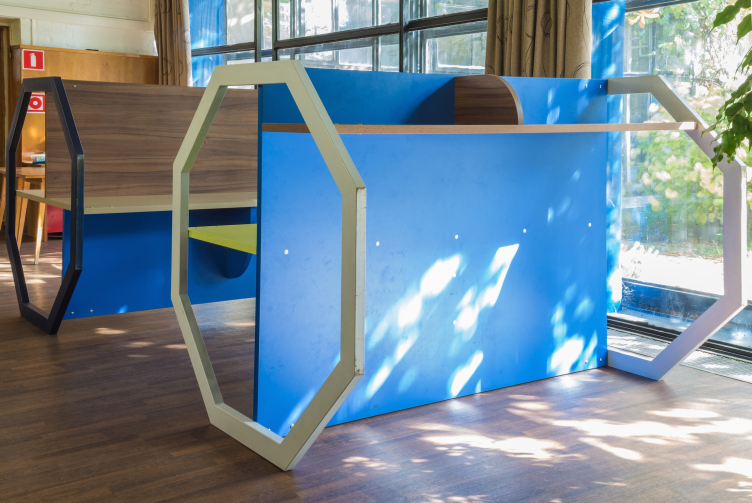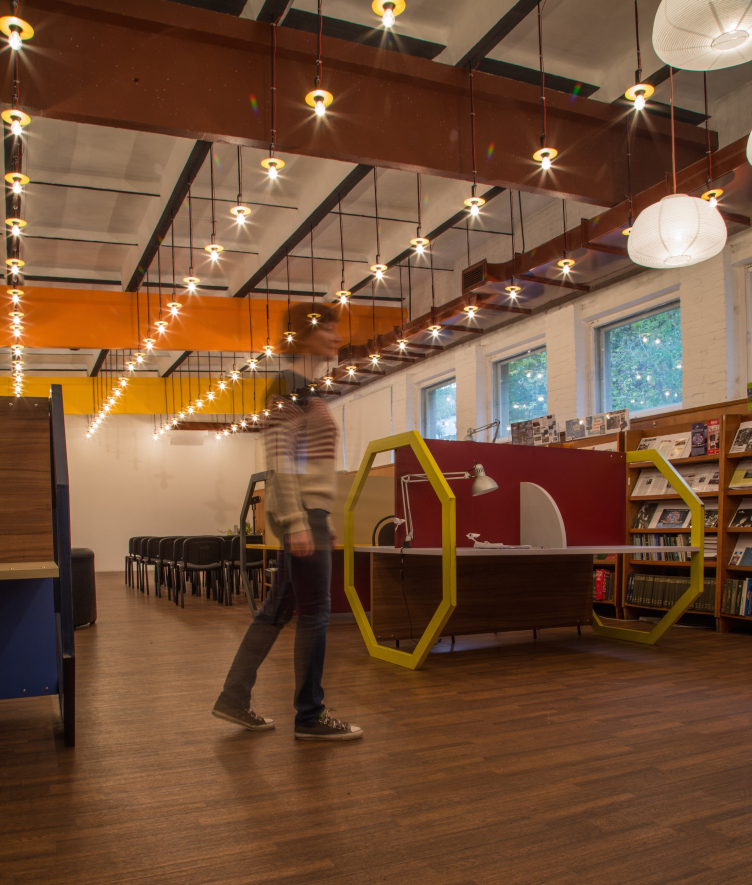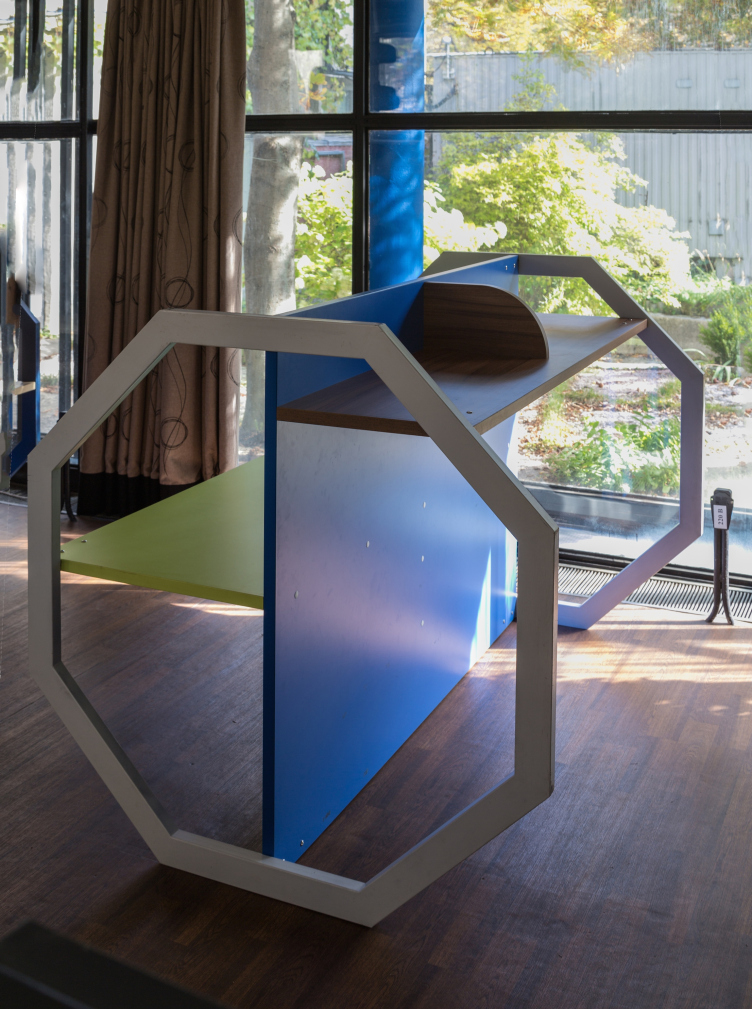Co-working space in the Blokhintsev Library in Dubna. Interior, 2015 © PANACOM
The issue of lack of socializing opportunities for the city people exists in Dubna just like in most Russian cities, including Moscow. Libraries, "houses of culture", and "places of young pioneers" that used to be, back in the day, an important part of the soviet urban infrastructure, all de facto survived into the present but lost their role of centers of social convergence. As the experience of PANACOM showed, restarting the dying library infrastructure was rendered possible by doing a few obvious things: "clearing" the space, making it multifunctional with a possibility of conducting various events of different format, adding comfort to the environment for the people to read in, and providing a wireless internet connection.
On the left: "Blokhinka, an archive photo; on the right: a modern photo. Courtesy of PANACOM
The springboard for all this, according to the company leader Arseniy Leonovich, was found in the idea of organizing a co-working space in the reading hall. Initially, all the changes and improvements were made by enthusiasts from the local community. In the reading hall, the hang-on fossil flax ceiling was dismantled. "Above it, we discovered half as much space as there was underneath it, and, instead of a stuffy "squashed" room we got a great single-aisle hall with nine-meter girders, beautiful in their own way - Arseniy Leonovich shares - I added some light, turning the studs into a semblance of lampposts, left the curtains untouched, as well as the huge screen, and also brought in here the convenient flip-flop rollover tables that had developed for the NAYADA competition.
Blokhintsev Library in Dubna. Archive photo. Courtesy of PANACOM
Clearing away the "layers of time" and removing the bookshelves, the project returned the reading hall to that clear understanding of space that was inherent to the library in its original concept. The building was built in 1956 upon the project of Bulgarian architects (chief architect of the project being B.Iolov), in the forms of what one might call international modernism. The library is composed of clear-cut geometric volumes, the lighted premises of the reading hall with its large windows being turned inside the yard with a fountain in it. The interior design was though out down to the last chair, bookshelf, reception desk, and even the leaflet stands and cache-pots.
Blokhintsev Library in Dubna. Archive photos. Courtesy of PANACOM
The renovated reading hall quickly became the gravity center for the local community. The transformer furniture - the eight-facet rollover tables, folding chairs, pull-out screens and projectors, mobile partitions, and the stands for the book novelties - provides an opportunity to quickly adjust it for different kinds of events - lectures, discussions, lessons for children, and concerts - and people started coming to Blokhinka. The library gave an impulse for reviving the "university campus" part of the city, not so young already. And it all started with the fact that thanks to the designer project by PANACOM it became recognizable. And, in addition, it started providing related services for the local community - meaning, not only giving a free access to information but also performing the networking function for the people.
Co-working space in the Blokhintsev Library in Dubna. Interior, 2015 © PANACOM
Co-working space in the Blokhintsev Library in Dubna. Interior, 2015 © PANACOM
The next step of transforming the library, according to Arseniy Leonovich, could be opening the vault territory. Under the realities of today's digital technologies, there is little point dividing the library premises into the reading hall (or a newsroom) and the subscriber service center; blending these two together, one could expand the comfortable environment for the visitors who could then be offered various formats of networking and reading books - the architect explains.
Co-working space in the Blokhintsev Library in Dubna. Interior, 2015 © PANACOM
Co-working space in the Blokhintsev Library in Dubna. Interior, 2015 © PANACOM
Arseniy Leonovich:
"I also have a vision of renovating the entire library building. After the newsroom I would like to do the entrance group, put benches outside, organize the territory of the summer garden for organizing open-air lectures and exhibitions, and connect the life of this new public center with the city's environment by adding related businesses here - cafés, for example. I've got plans to do a full-scale renovation project of the whole first floor to implement the common saying attributed to Stanislavski that "a theater begins at the cloakroom".
Co-working space in the Blokhintsev Library in Dubna. Interior, 2015 © PANACOM
Co-working space in the Blokhintsev Library in Dubna. Interior, 2015 © PANACOM
